transition: unset !important
}
#savetherecipe .formkit-form .seva-fields.formkit-fields button:hover {
background-color: #000 !important;
color: #f85f1b !important;
}
#savetherecipe .formkit-form .formkit-guarantee {
display: none
}
@media (max-width: 555px){
#savetherecipe .formkit-form .seva-fields.formkit-fields button {
flex: 25% !important;
}
}
@media (max-width: 434px) {
#savetherecipe .formkit-form .seva-fields.formkit-fields {
display: grid !important
}
#savetherecipe .formkit-form .seva-fields.formkit-fields .formkit-field {
flex: 100% !important;
width: 100%;
margin-right: 0 !important;
min-width: auto;
}
#savetherecipe .formkit-form .seva-fields.formkit-fields button {
width: 100%;
flex: 100% !important;
min-width: auto;
}
}
]]]]>]]>
Our Mongolian beef recipe brings a take-out classic to your kitchen with just a few ingredients.
This Chinese-American stir-fry combines tender beef, brown sugar, soy sauce, fresh ginger, and fresh garlic to create a flavorful and sticky, savory-sweet sauce.
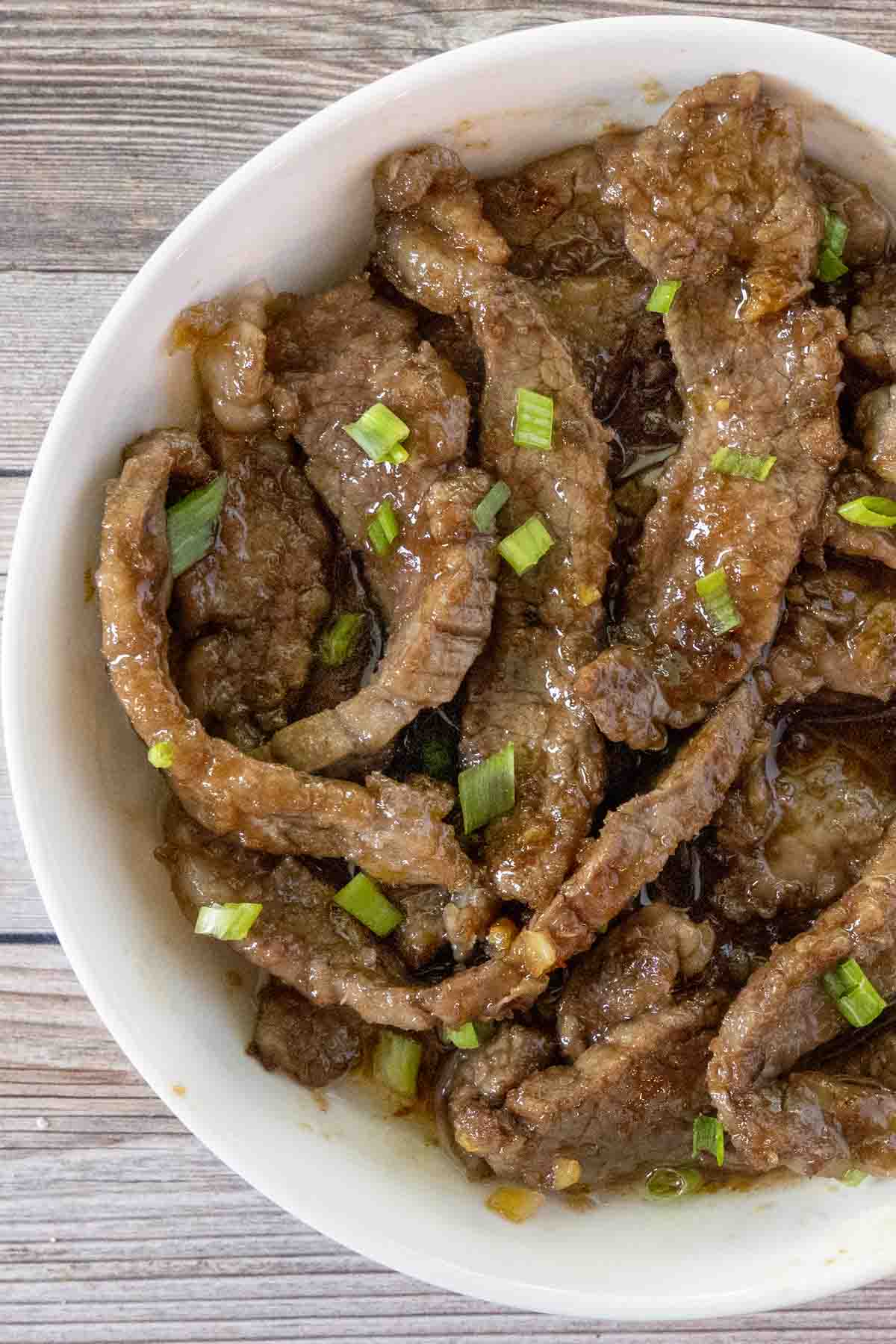
Despite its name, Mongolian beef didn’t originate in Mongolia. This recipe is thought to have evolved from Taiwanese restaurant recipes that featured “Mongolian Barbeque” on their menus.
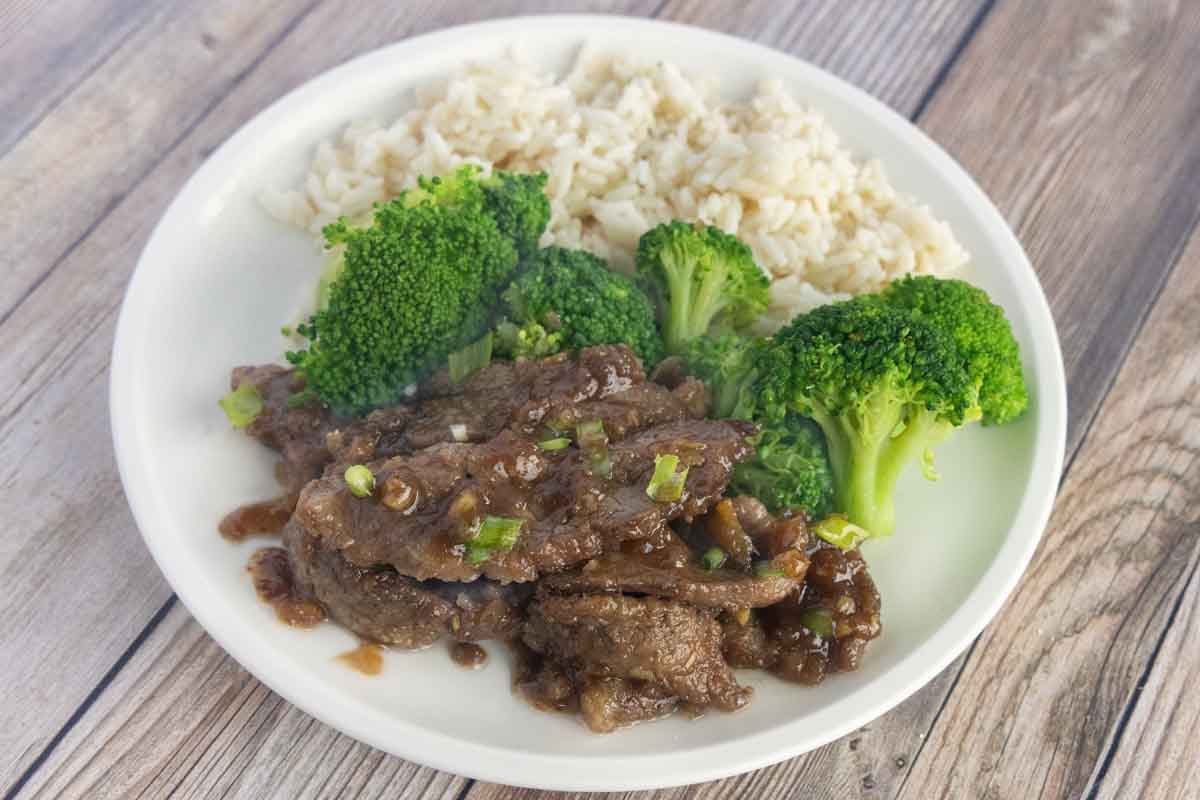
Mongolian beef is best served with simple sides like rice and steamed vegetables, which complement the savory sauce and beef.
For a change of pace, fried rice or stir-fried noodles would make a nice addition to Mongolian beef. The best thing about this recipe (other than knowing exactly what you are putting into your body) is that you can make it in about the time it would take for you to go and pick it up. And for a fraction of the cost!
If you are looking for the perfect pairing for Mongolian beef, check out our Asian Cucumber Salad for a quick, crunchy, and satisfying side.
Table of Contents:
View more
Ingredients
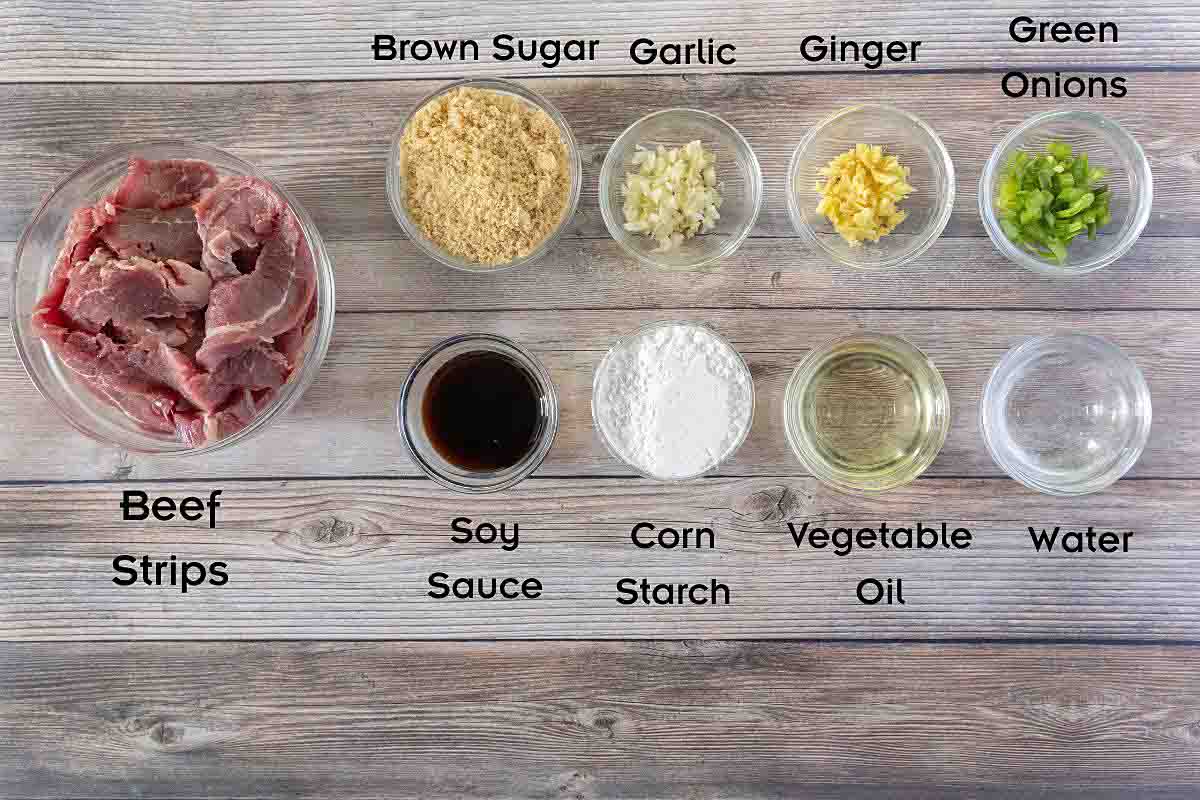
Gather the ingredients to prepare our Mongolian Beef recipe. Culinary professionals call this the “Mise en Place,” which means “everything in its Place.”
Setting up your ingredients not only helps speed up the cooking process but also ensures you have all the necessary ingredients on hand to make the recipe.
Can I Make Adjustments to the Recipe?
We use low-sodium soy sauce when making this recipe, but regular soy, dark soy, tamari, or liquid aminos can be used.
Flank steak is my go-to beef for this recipe because it’s lean and tender, but you can use skirt steak, hanger steak, sirloin, or filet mignon if you’re feeling fancy. Just make sure to pick a steak that’s fairly lean and can be cut into small strips. And remember always to cut it against the grain.
You can also use sliced pork, lamb, or chicken to make the recipe. Just make sure to use thin slices.
You can kick up the heat by added red pepper flakes or chilies to the sauce.
How to Make Mongolian Beef
Follow along with my simple step-by-step instructions to learn how to make Mongolian beef in your home kitchen.
Slice the steak into thin slices (about ¼ inch).
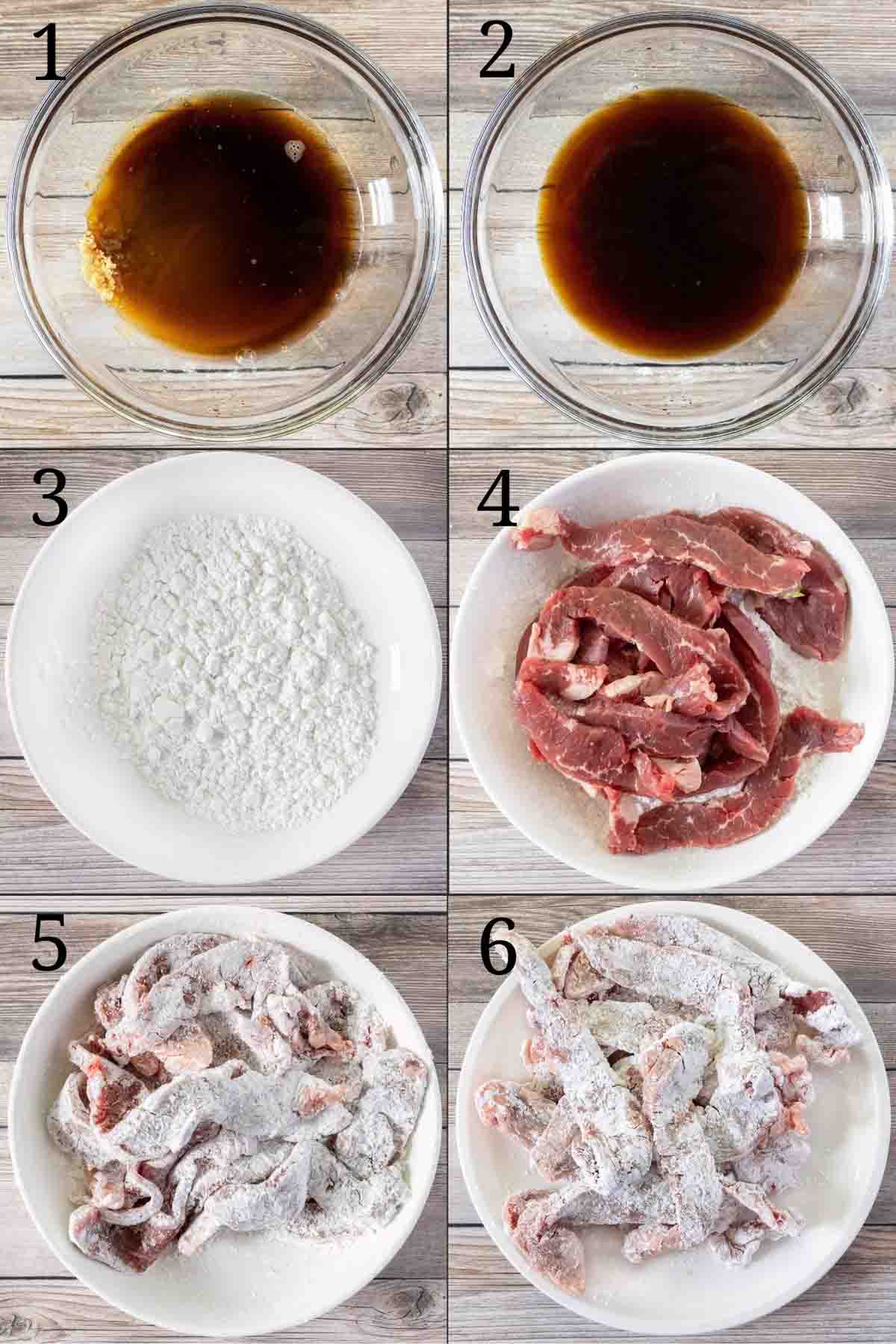
Add the soy sauce, water, and brown sugar to a small mixing bowl.
Whisk to combine and set aside until needed.
Place the corn starch into a shallow bowl.
Add the steak slices to the bowl.
Toss to coat the slices thoroughly. You may need to do this in batches.
Set the coated steak aside on a plate until needed.

Add two teaspoons of vegetable oil to a large pan over medium-low heat. Once heated, add minced ginger and garlic to the pan.
Cook until fragrant (about one minute).
Add the soy sauce mixture to the pan.
Bring the mixture to a boil. The liquid will thicken to a sauce (about 3-5 minutes).
Remove the sauce from the heat and transfer it from the pan to a bowl.
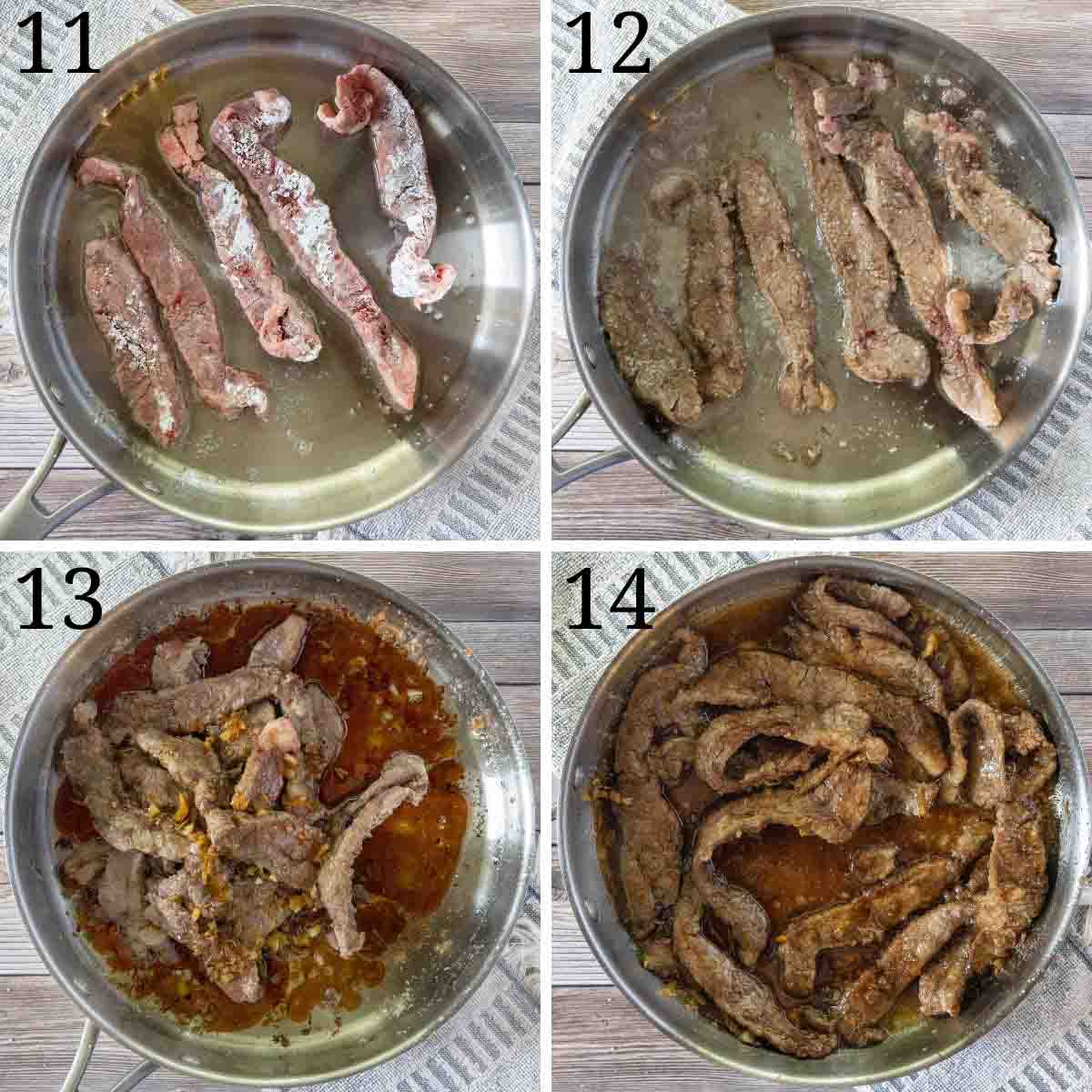
In a clean pan, heat two teaspoons of vegetable oil over medium-high heat, then add the pieces of corn starch-coated steak to the pan to cook for about one minute, or until browned.
Turn the pieces over to cook the other side. Remove the cooked pieces from the pan and place them on a plate until all of the beef has been cooked.
*Be careful not to over-crowd the pan. Add more oil if needed, and make sure to preheat the oil before adding any additional meat to the pan.
Using the same pan, reduce the heat to medium and add all of the cooked beef and the sauce to the pan.
Heat until the sauce begins to bubble. If the sauce looks too thick, add a little water to the pan.
Remove the pan from the heat, and stir in the green onions (save some for a garnish).
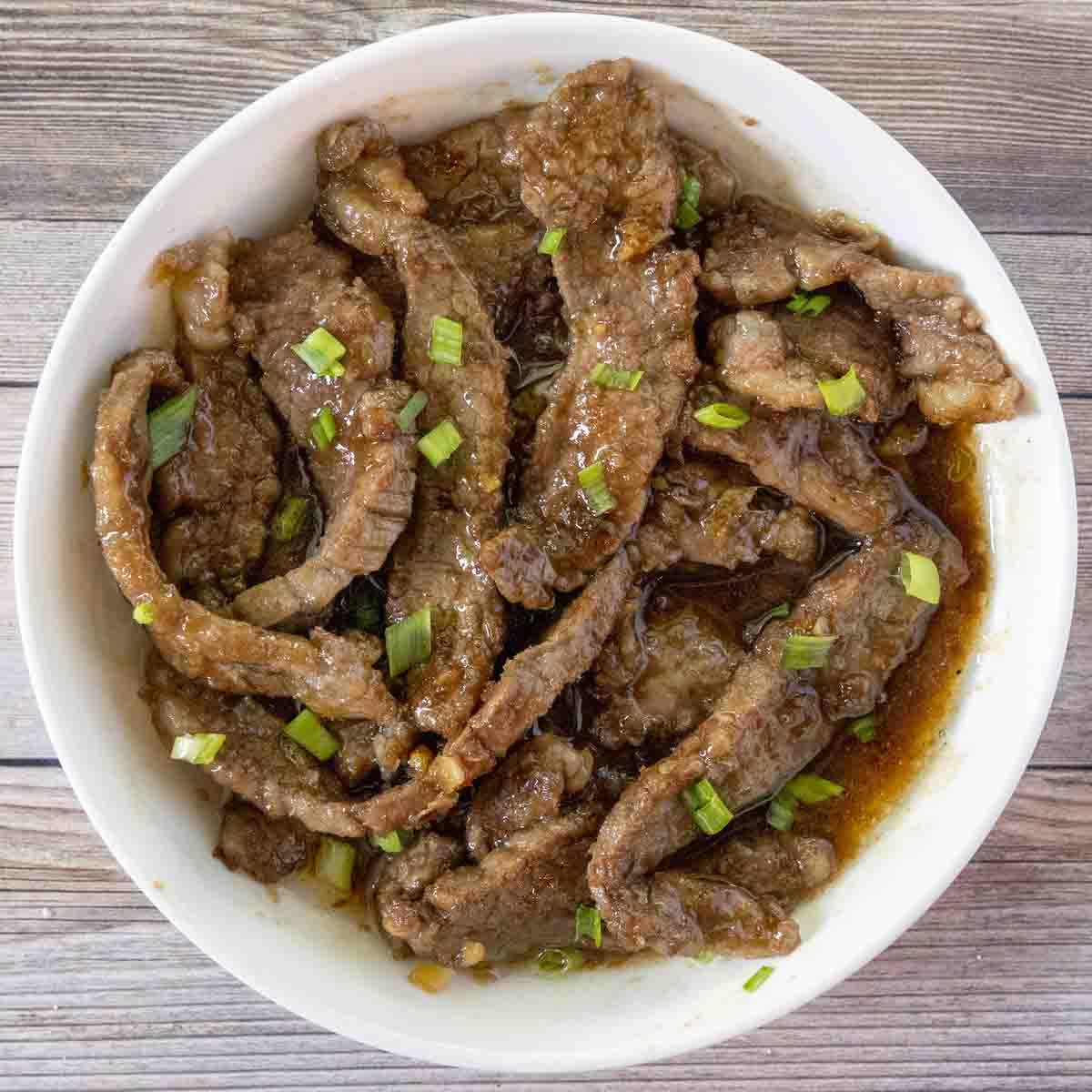
Wouldn’t you like to sit down to a plateful of our tender beef in a flavorful garlic-ginger sauce? Serve it over hot white rice, spinkle some green onions on top and you’ve got a dinner better than take-out in about 30 minutes.
How to Store and Reheat
Store any leftover Mongolian Beef in an airtight container in the refrigerator for up to three days. This makes it an excellent option for meal prep.
To reheat, place the leftovers in a small saucepan with a few tablespoons of water over low to medium heat, making sure the sauce does not burn.
Recipe FAQs
Yes, you do. Cornstarch is the best way to crisp up the beef strips and thicken the sauce.
The sauce can be made ahead of time in larger batches, freezing it in portions in Ziplock bags. Thaw overnight in the fridge or place the ziplock bag in a bowl of cool water. Prepare the beef, add the sauce, and dinner will be done in no time.
Use a quick stir-fry over high heat, don’t overcook, and slice it thinly. Tossing the beef in cornstarch before cooking helps lock in moisture, which will keep it tender.
More Recipes You’ll Love!
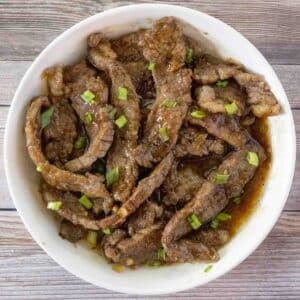
Easy Mongolian Beef Recipe
Learn how to make tender, flavorful Mongolian Beef at home with my easy stir-fry recipe. This takeout classic is better than your favorite Chinese restaurant!
]]>
Ingredients
1x2x3x
Ingredients:
1 pound flank steak thinly sliced4 teaspoons vegetable oil1 tablespoon garlic minced½ teaspoon ginger minced½ cup low sodium soy sauce or regular⅓ cup water½ cup brown sugar packed⅓ cup corn starch2 tbs green onions thinly sliced
Instructions
Instructions:
Slice steak into thin slices (about ¼ inch).
Add the soy sauce, water, and brown sugar to a small mixing bowl. Whisk to combine and set aside until needed.
Place the corn starch into a shallow bowl.
Set the coated steak aside on a plate until needed.
Add two teaspoons of vegetable oil to a large pan over medium-low heat. Once heated, add minced ginger and garlic to the pan, and cook until fragrant (about one minute).
Add soy sauce mixture to the pan and bring to a boil. The liquid will thicken to a sauce (about 3-5 minutes).
Remove the sauce from the heat and transfer from pan to a bowl.
In a clean pan, heat two teaspoons of vegetable oil over medium high heat.
Add the pieces of corn starch-coated steak to the pan to cook on each side for about one minute, or until browned.
Using the same pan, reduce the heat to medium and add all of the cooked beef and the sauce to the pan.
Heat until the sauce begins to bubble. If the sauce looks too thick, add a little water to the pan.
Remove from heat, and stir in green onions (save some as a garnish).
Serve with white rice and steamed vegetables.
Notes
We use low-sodium soy sauce when making this recipe, but regular soy, dark soy, tamari, or liquid aminos can be used.
Flank steak is my go-to beef for this recipe because it’s lean and tender, but you can use skirt steak, hanger steak, sirloin, or filet mignon if you’re feeling fancy. The main thing to look for in your steak cut is lean beef that can be cut into small strips. And remember always to cut it against the grain.
You can also use sliced pork, lamb, or chicken to make the recipe. Just make sure to use thin slices.
You can kick up the heat by adding red pepper flakes or chilies to the sauce.
How to Store and Reheat
Store any leftover Mongolian Beef in an airtight container in the refrigerator for up to three days. This makes it an excellent option for meal prep.
To reheat, place the leftovers in a small saucepan with a few tablespoons of water over low to medium heat, making sure the sauce does not burn.
Do I have to use cornstarch?
Yes, you do. Cornstarch is the best way to crisp up the beef strips and thicken the sauce.
Can I make it ahead of time?
The sauce can be made ahead of time in larger batches, freezing it in portions in Ziplock bags. Thaw overnight in the fridge or place the ziplock bag in a bowl of cool water. Prepare the beef, add the sauce, and dinner will be done in no time.
How do I keep the beef tender?
Use a quick stir-fry over high heat, don’t overcook, and slice it thinly. Tossing the beef in cornstarch before cooking helps lock in moisture, which will keep it tender.
Nutrition
Calories: 363kcalCarbohydrates: 39gProtein: 27gFat: 10gSaturated Fat: 3gPolyunsaturated Fat: 3gMonounsaturated Fat: 3gTrans Fat: 0.03gCholesterol: 68mgSodium: 1218mgPotassium: 553mgFiber: 0.4gSugar: 27gVitamin A: 30IUVitamin C: 1mgCalcium: 63mgIron: 3mg




